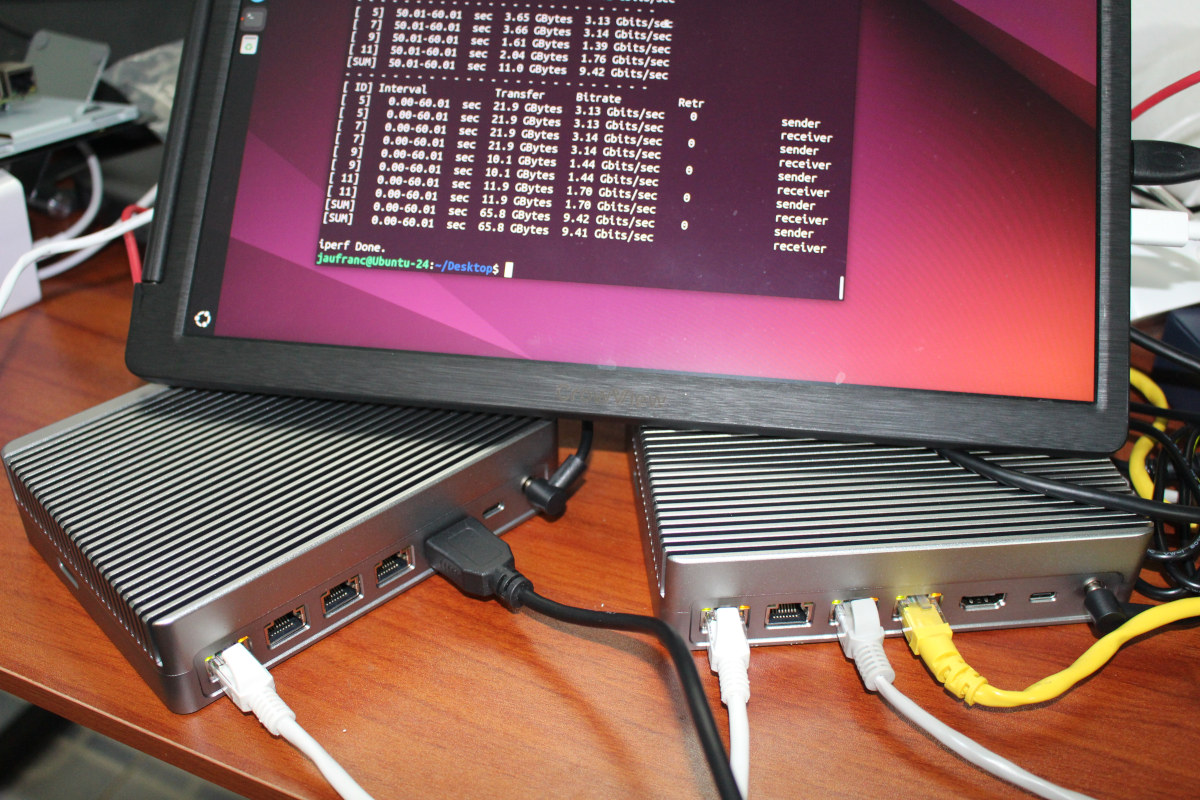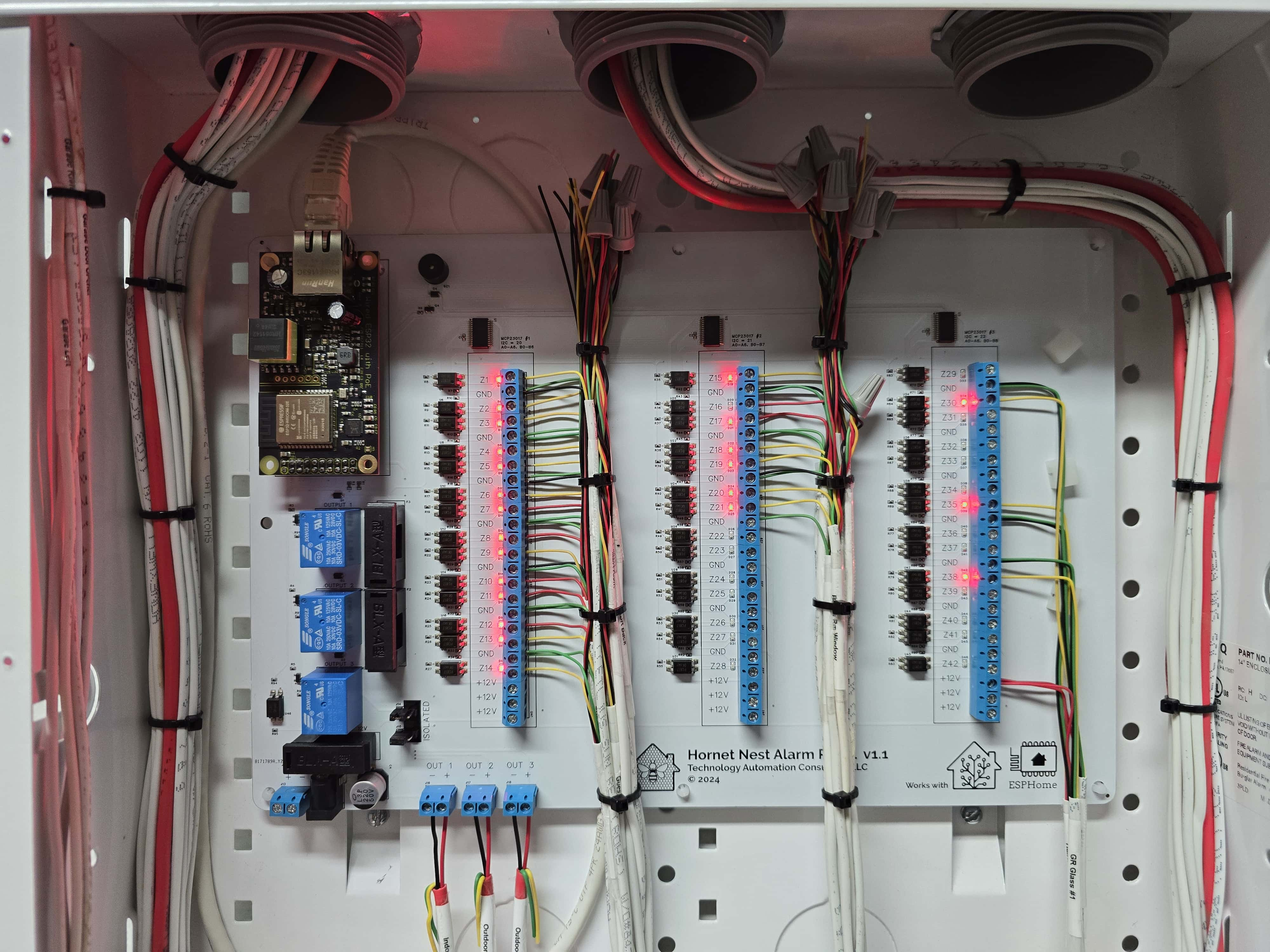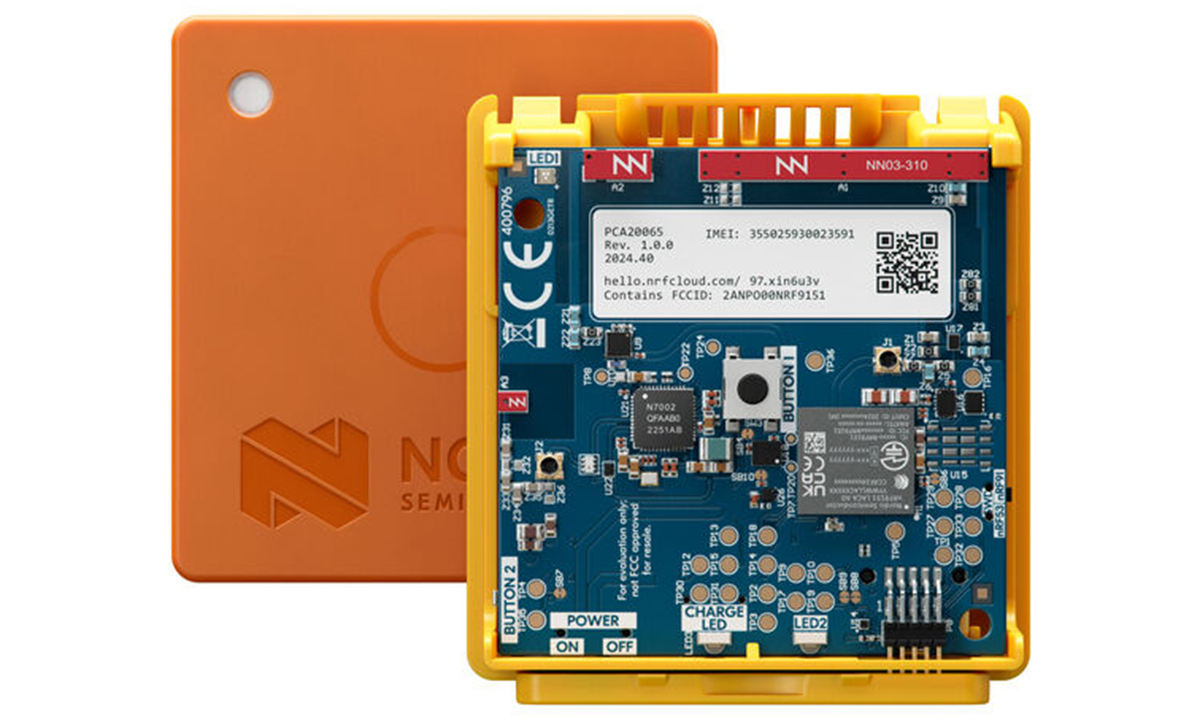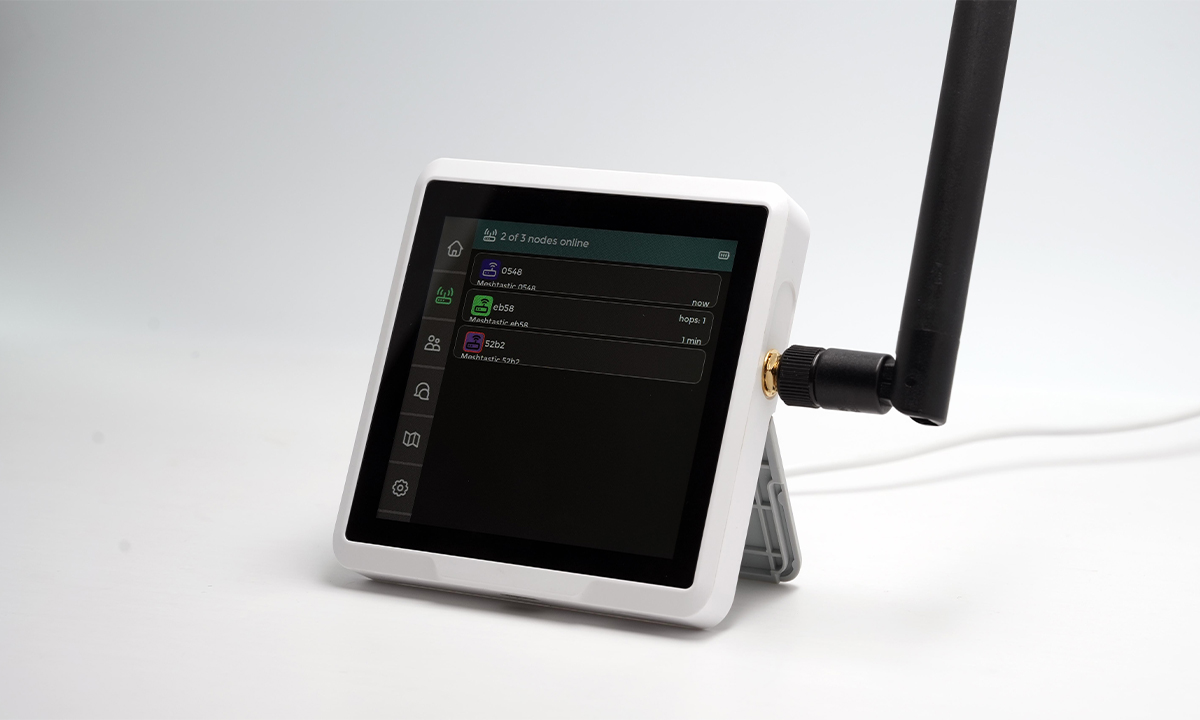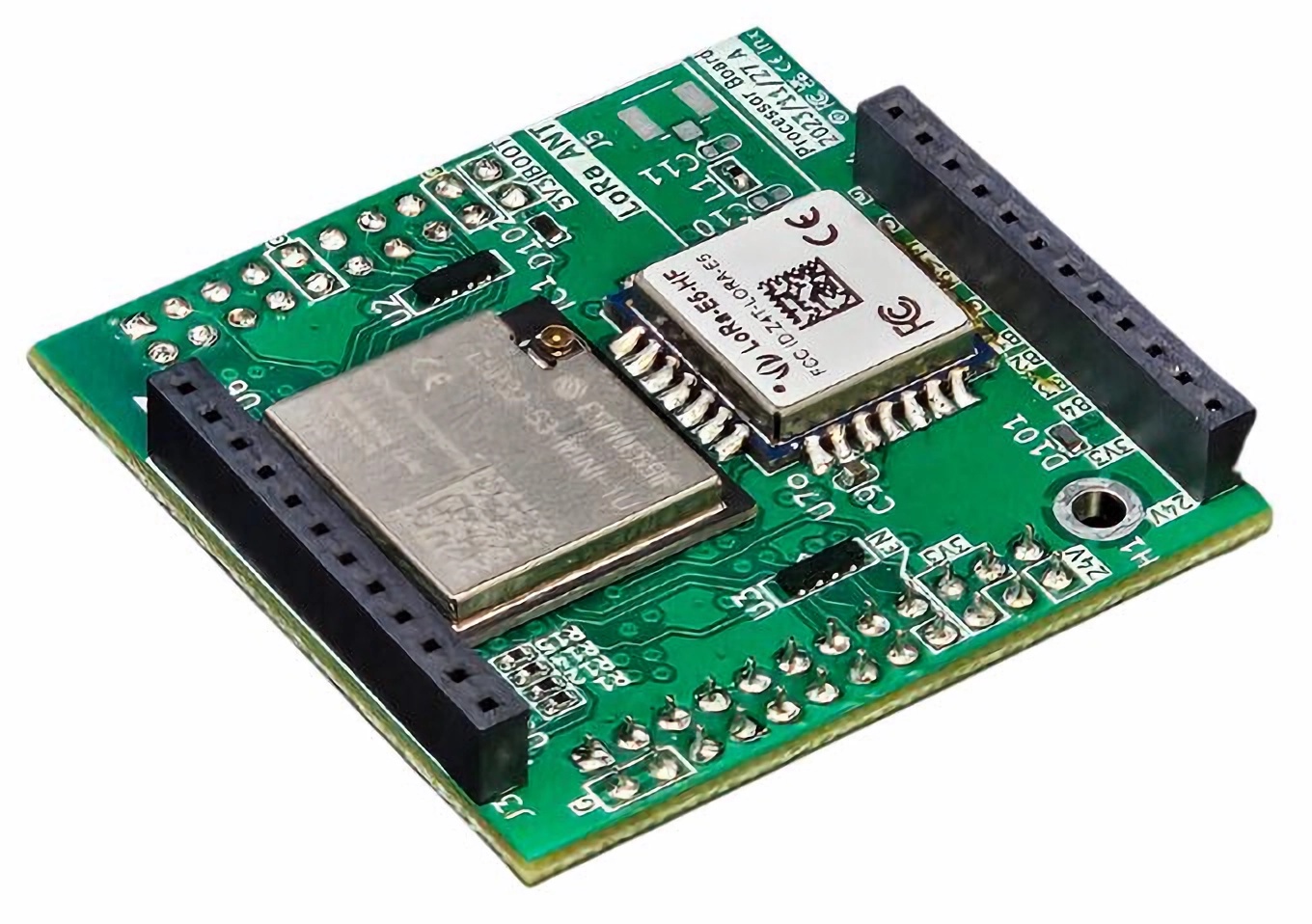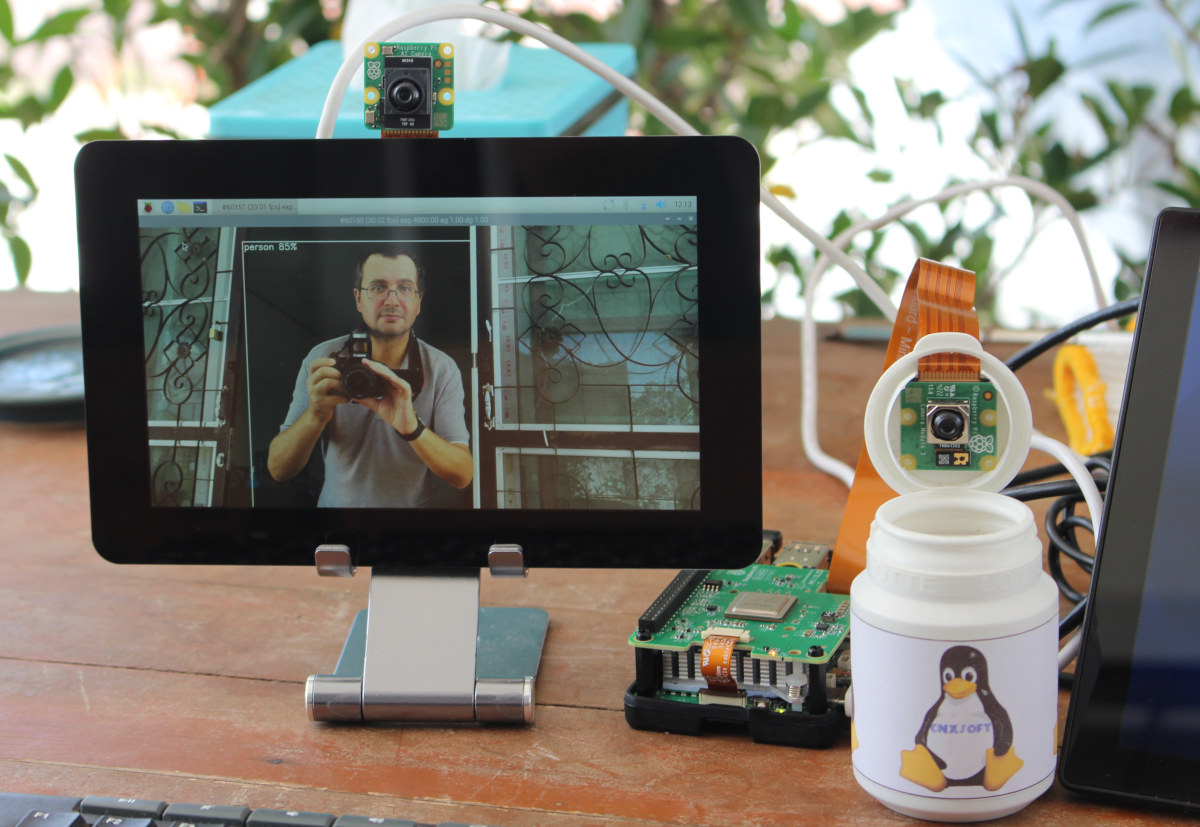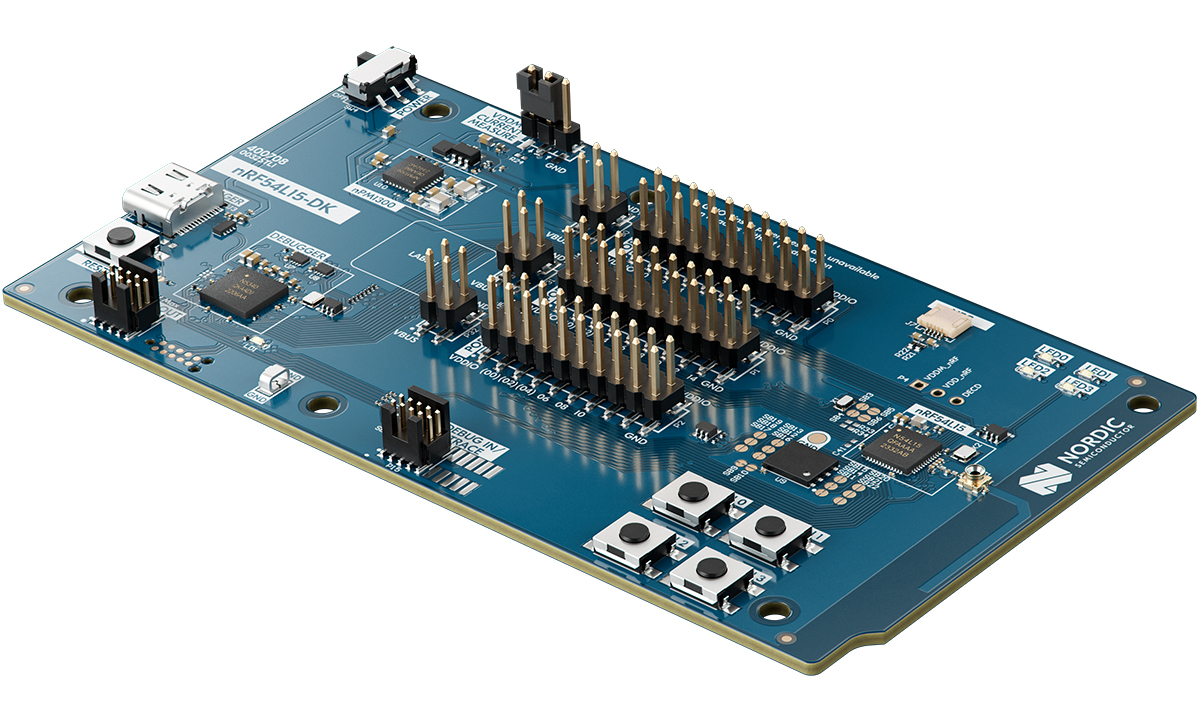I’ve already checked out iKOOLCORE R2 Max hardware in the first part of the review with an unboxing and a teardown of the Intel N100 system with two 10GbE ports and two 2.5GbE ports. I’ve now had more time to test it with an OpenWrt fork, Proxmox VE, Ubuntu 24.04, and pfSense, so I’ll report my experience in the second and final part of the review. As a reminder, since I didn’t have any 10GbE gear so far, iKOOLCORE sent me two R2 Max devices, a fanless model and an actively-cooled model. I was told the fanless one was based on Intel N100 SoC, and the actively-cooled one was powered by an Intel Core i3-N305 CPU, but I ended up with two Intel N100 devices. The fanless model will be an OpenWrt 23.05 (QWRT) server, and the actively cooled variant be the device under test/client with Proxmox VE 8.3 server […]
Hornet Nest Alarm Panel – An Home Assistant-compatible, ESP32 home security automation platform with PoE and 42-zone support (Crowdfunding)
The Hornet Nest Alarm Panel is a customizable, ESP32-based alarm control system designed and produced by US-based Technology Automation Consulting for home security automation. The device is powered by the wESP32 Ethernet board with PoE support and is compatible with Home Assistant through the ESPHome firmware. It features up to forty-two optoisolated zones, six MOSFET-controlled outputs, and six additional trigger outputs for 3.3V devices. It integrates a piezo buzzer and supports add-ons like a Wiegand keypad and water leak sensors. The Hornet Nest Alarm ESP32-based home security platform “aims to bridge the gap between traditional wired security systems and the flexibility of modern smart home automation.” Christopher Greenless of Technology Automation Consulting says the project was born from his need for a robust and smart security system to integrate with his Home Assistant setup. Proprietary solutions were inadequate and limited while DIY options were inefficient and often unreliable. He created […]
Nordic Thingy:91 X multi-sensor cellular IoT platform combines nRF9151 LTE IoT SiP, nRF5340 BLE SoC, and nRF7002 WiFi 6 IC
Nordic Semiconductor introduced the Nordic Thingy:91 in mid-2019, a cellular IoT prototyping platform built around the Nordic nRF9160 system-in-package (SiP). It supports LTE-M, NB-IoT, and GPS, and includes features like an Arm Cortex-M33 core, Arm TrustZone security, and flash memory. The platform is ideal for creating IoT Proof-of-Concepts, demos, and prototypes, making it easy to test and deploy IoT applications. The upgraded Nordic Thingy:91 X features the new Nordic nRF9151 SiP, offering support for LTE-M, NB-IoT, GNSS, and DECT NR+ for global connectivity, integrates the nRF5340 SoC for USB and Bluetooth LE, and the nRF7002 IC for Wi-Fi locations. The platform includes sensors for environmental and motion sensing, one expansion connector for Qwiic/STEMMA QT and Grove modules, and antennas for LTE, GNSS, and Wi-Fi. Additionally, the kit also features a Nano/4FF SIM slot, two SIM cards, and a 1,350 mAh Li-Po battery managed by nPM6001 and nPM1300 PMICs, to support field […]
SenseCAP Indicator – An ESP32-S3 and RP2040-based Meshtastic LoRa device with a 4-inch touchscreen display
The SenseCAP Indicator is a 4-inch capacitive touchscreen device designed for IoT connectivity and Meshtastic applications powered by Espressif Systems ESP32-S3 and Raspberry Pi RP2040 microcontrollers. It supports Wi-Fi (802.11b/g/n) and Bluetooth 5.0 LE connectivity, as well as LoRa using the Semtech SX1262 chip. The device also provides Grove connectors for expansion and a microSD slot supporting up to 32GB. Preloaded with Meshtastic firmware, the SenseCap Indicator is ready to function as a Meshtastic desktop or car node and can be reconfigured into a LoRaWAN Single-Channel Gateway. It features a 3.95-inch RGB touchscreen with 480×480 resolution, which is larger than most other Meshtastic solutions we’ve covered. Previously, we reviewed the SenseCAP Indicator D1Pro, which shares many features with the SenseCAP Indicator. However, the D1Pro integrates tVOC and CO2 sensors, along with an external Grove AHT20 TH sensor for precise temperature and humidity measurements. With real-time air quality monitoring from the […]
LoRaWAN no code ESP32-S3 development platform offers Arduino MKR, MikroBus, FeatherWing, and Grove expansion (Crowdfunding)
Sheffield-based IoT company, inx-systems has developed a programmable LoRaWAN IoT module and a development breakout board that integrates with Arduino MKR, Adafruit FeatherWing, Grove, and mikroBUS shields. The module is powered by an ESP32-S3 microcontroller which comes preloaded with inx’s no-code LoRaWAN software development platform, Lucid. The WAN-4-ALL module has built-in Wi-Fi, Bluetooth, and LoRaWAN connectivity via the ESP32-S3 microcontroller and Seeed Studio Wio-E5 module. This makes the module suitable for short-range, medium-range, and long-range IoT applications such as remote monitoring, home automation, industrial control, and smart agriculture. We have covered other LoRaWAN development platforms such as SB Component’s RAKWireless-based products, Particle’s multi-radio devices, and the UnPhone. The WAN-4-ALL module differentiates itself with the preloaded no-code LoRaWAN development environment and multiple connectivity options. WAN-4-ALL module specifications: SoC – Espressif Systems ESP32-S3 dual-core microcontroller @ 240MHz with Wi-Fi 4, Bluetooth LE 5 LoRaWAN Module – Seeed Studio Wio-E5 Module based on […]
LILYGO T-Bao tiny AI robot combines ESP32 and Kendryte K210 RISC-V chip, features camera and display
The T-Bao AI robot is a compact embedded device/robot that combines an ESP32 and a K210 RISC-V microcontroller and can perform face recognition and robotics applications. This compact device features a 1.54-inch 240×240 capacitive touch screen, a 2MP OV2640 camera, a MAX98357A I2S audio amplifier, a DRV8833 motor driver, an MPU6050 6-axis motion sensor, and an AXP202 PMU for power management. Additionally, it supports USB charging, offers LEGO blocks compatibility, and can move around with integrated caster wheels. These features make it usable for educational projects, robotics, IoT applications, and embedded systems prototyping. LILYGO T-Bao specifications SoCs Kendryte K210 dual-core 64-bit RISC-V processor @ 400 MHz with 8MB on-chip RAM, various low-power AI accelerators delivering up to 0.5 TOPS ESP32-D0WDQ6-V3 dual-core Xtensa LX6 processor, 240 MHz, 16MB Flash, 8MB PSRAM Display – 1.54-inch capacitive touch LCD (240×240) Camera – 2MP OV2640 with rolling shutter, UXGA (1600 x 1200) resolution, 180-degree […]
Getting Started with Raspberry Pi AI HAT+ (26 TOPS) and Raspberry Pi AI camera
Raspberry Pi recently launched several AI products including the Raspberry Pi AI HAT+ for the Pi 5 with 13 TOPS or 26 TOPS of performance and the less powerful Raspberry Pi AI camera suitable for all Raspberry Pi SBC with a MIPI CSI connector. The company sent me samples of the AI HAT+ (26 TOPS) and the AI camera for review, as well as other accessories such as the Raspberry Pi Touch Display 2 and Raspberry Pi Bumper, so I’ll report my experience getting started mostly following the documentation for the AI HAT+ and AI camera. Hardware used for testing In this tutorial/review, I’ll use a Raspberry Pi 5 with the AI HAT+ and a Raspberry Pi Camera Module 3, while I’ll connect the AI camera to a Raspberry Pi 4. I also plan to use one of the boards with the new Touch Display 2. Let’s go through a […]
nRF54L15 DK: A Development Kit for nRF54L15, nRF54L10, and nRF54L05 SoCs with Bluetooth, Thread, and Zigbee
The nRF54L15 DK is a development kit designed to evaluate the wireless SoCs of the nRF54L15, nRF54L10, and nRF54L05 wireless SoCs. These SoCs support multiple wireless protocols, including Bluetooth Low Energy, Bluetooth Mesh, Matter, Thread, Zigbee, and 2.4GHz proprietary protocols, with data rates of up to 4Mbps. The kit integrates the nRF54L15 SoC and provides emulation capabilities for the nRF54L10 and nRF54L05, enabling flexible testing and development across the nRF54L Series. The nRF54L series SoCs differ in memory configurations to meet various application requirements. The nRF54L15 includes 1.5 MB of non-volatile memory (NVM) and 256 KB of RAM for high-performance applications. The nRF54L10 features 1.0 MB of NVM and 192 KB of RAM for mid-range use cases, while the nRF54L05 offers 0.5 MB of NVM and 96 KB of RAM for entry-level designs requiring fewer resources. The kit is supported by the nRF Connect SDK and tools, providing access to […]


